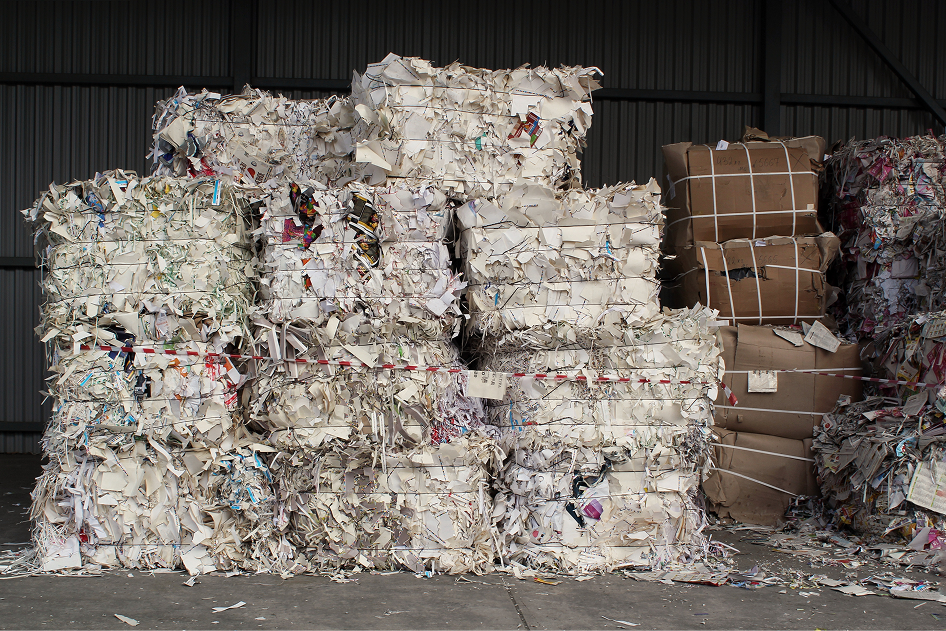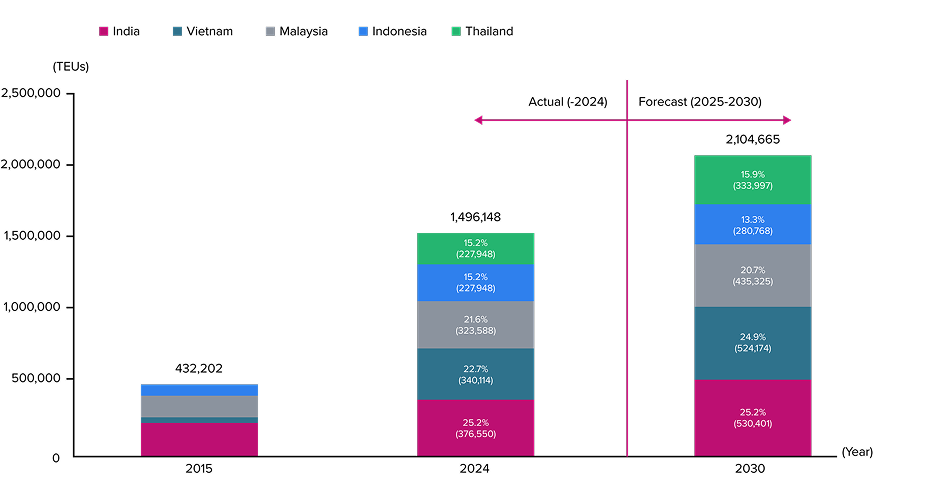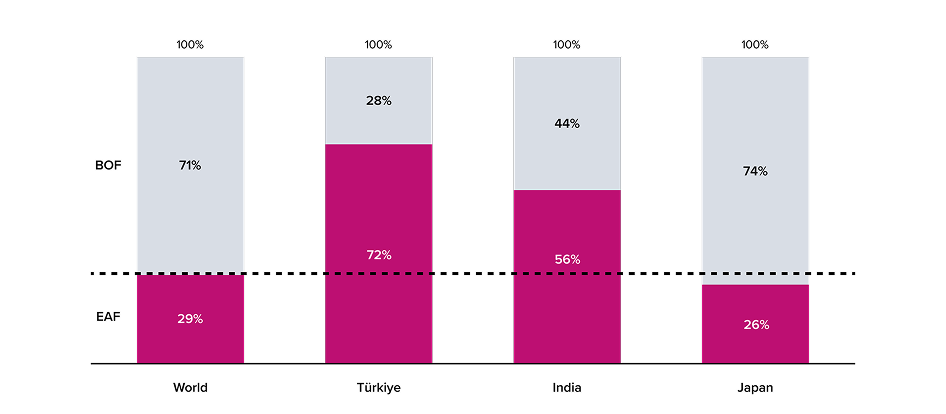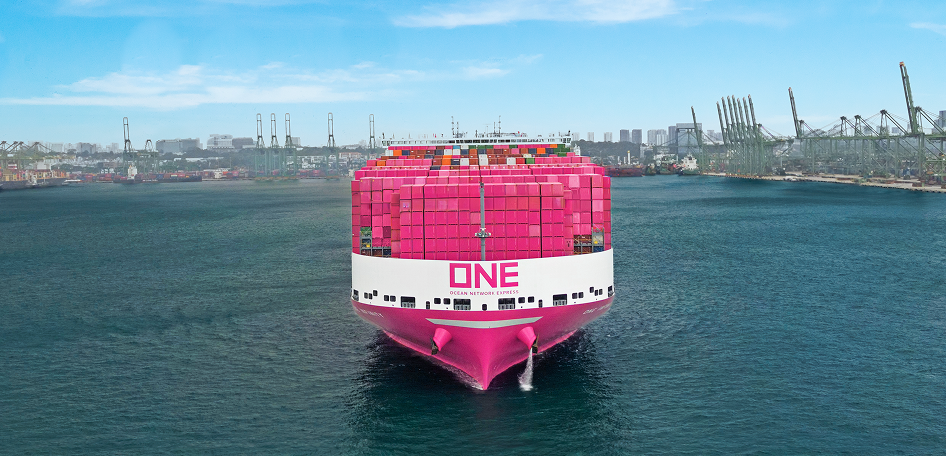이동 경로
The Global Recycling Shift: ONE's Insights on New Trade Flows

As the world moves towards a sustainable, circular economy, the concept of "End of Waste" is fundamentally reshaping global supply chains. This principle establishes criteria for when waste materials become new products or raw materials, and transforms processed waste materials into commodities. Key materials like waste paper and scrap metal are at the forefront of this movement, with their international trade volumes creating new challenges and opportunities for logistics. A major realignment is underway: traditional import hubs are being replaced by growing markets in India and Southeast Asia, driven by evolving regulations and surging domestic demand. For businesses in the recycled resources market, understanding the drivers behind these new trade flows is essential for maintaining a competitive edge.
Trend and Forecast of Waste Paper Transport Volume by Container ships

Source: S&P Global Market Intelligence
Insight 1:
Why is the global waste paper trade shifting to India & Southeast Asia?
The international waste paper market, with an annual transport volume of around 2 million TEUs (twenty-foot equivalent units), is experiencing a significant geographical pivot. For years, China was the dominant importer. However, in 2017, the Chinese government implemented stringent new environmental regulations, including the "National Sword" policy, which banned the import of most waste materials, including mixed paper. This significant policy shift led global supply chains to redirect vast quantities of waste paper to new markets.
Simultaneously, Southeast Asian nations and India began increasing their imports to supply their growing manufacturing and packaging industries. Similarly, booming e-commerce in Southeast Asia, particularly in Vietnam, is driving unprecedented demand for cardboard and packing materials. This shift brings new market dynamics: forecasts suggest that by 2030, India, Vietnam, and Malaysia will collectively account for over 70% of worldwide waste paper imports. Furthermore, this e-commerce driven demand spikes during holidays and major sale periods, directly impacting both material prices and shipping volume, making it a key indicator for logistics planning.
Trend of Scrap Metal Transport Volume by Container ships

Source: S&P Global Market Intelligence
Insight 2:
Why is India becoming a major hub for scrap metal?
The demand for scrap metal is closely linked to steel production, and India is rapidly emerging as a global steel powerhouse. The expansion of steel demand is driven by the Indian government's strong push of infrastructure investment and domestic manufacturing initiatives such as "Make in India". These policies have stimulated steel usage across various sectors. As steel's primary applications are in the construction and automotive sectors, trends in these industries serve as leading indicators for future scrap metal demand. S&P Global Market Intelligence forecasts that India's scrap metal imports will increase at a Compound Annual Growth Rate (CAGR) of 3.1% from 2025 to 2030, making it the world's second-largest importer after Türkiye by 2030.
EAF Ratio Comparison for Major Steel Producers

Source: World Steel Association
Your Expert Partner in a Changing Market

Navigating the evolving landscape of recycled resource logistics requires a partner with agility, extensive global coverage and deep market insight. With comprehensive route networks providing access to diverse countries and cities, ONE responds with maximum flexibility to regulatory changes across jurisdictions, while efficiently transporting diverse cargo volumes to multiple destinations. This flexibility is a major strength of ONE in meeting diverse market needs.
During transit, the safe and adequate loading (vanning/stuffing) of cargo is paramount to supply chain integrity. As a partner committed to minimizing risk, ONE emphasizes that shippers are responsible for properly blocking, bracing, and securing of all cargo, as well as implementing protective measures during container loading. This is essential to prevent cargo damage, container shifting, and safety incidents during long-distance sea transportation, ensuring the recycled resources reach their new markets efficiently.
Crucially, in the pursuit of a circular economy, the CO₂ footprint generated by long-distance transportation of resources presents a challenge. ONE is committed to minimizing this impact across the entire supply chain. As part of our sustainability commitment, ONE offers services to help customers visualize and reduce CO₂ emissions, including investing in a greener fleet and providing reporting tools. Our specialized service, ONE LEAF+, supports customers in achieving their environmental targets through measures like biofuel utilization, offering a concrete pathway towards sustainable logistics.
Trust ONE, Your Number ONE Shipping Partner, to provide you with the expertise needed to capitalize on opportunities in this dynamic global market.
Data Sources: Insights and data presented in this article are based on information from leading global organizations, including S&P Global Market Intelligence, European Commission, Mordor Intelligence, India Brand Equity Foundation, Temasek and Bain & Company, World Steel Association, the Japan External Trade Organization (JETRO), and other publicly available sources.